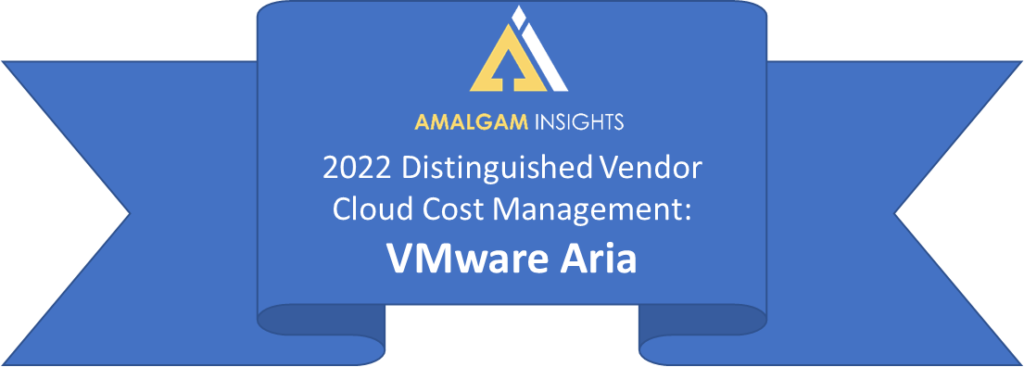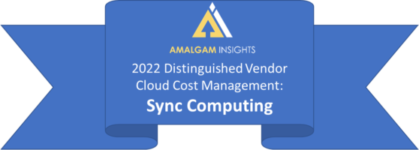Over the past few weeks, Amalgam Insights has delivered an in-depth look at the state of organizations’ cloud cost management and optimization initiatives, and discussed the challenges associated with improving those activities.
A significant challenge includes choosing the right vendor from among the many. Indeed, sifting through marketing and sales noise proves no easy task. Organizations often don’t know whether they would benefit most by teaming with a vendor directly, or by partnering with a managed service provider or professional services consultant — or by using a mix.
The options quickly become overwhelming for IT, finance, procurement, and other leaders responsible for improving how the organization spends money on cloud computing. In fact, in response (to some degree), some companies still try to manage and optimize their cloud resources through spreadsheets and other homegrown approaches. Manual practices, however, fail the organization. There are just too many cloud services and infrastructure considerations in even a single company to accurately track and manage without automation, tagging, cross-charging, and other imperative capabilities.
Therefore, as part of our continuing efforts to educate end users, Amalgam Insights presents the next portion of our Control Your Cloud: Selecting Cloud Cost Management in the Face of Recession series: profiles of distinguished cloud cost management and optimization vendors.
Each of the companies earning Amalgam Insights’ “Distinguished Vendor” badge has undergone rigorous evaluation through briefings, presentations, and documentation analysis. Over the coming weeks as we publish more vendor profiles, note that we do so in no particular order. With that, we begin with SADA.
WHY SADA FOR COST CLOUD COST AND OPTIMIZATION MANAGEMENT
- Takes a best-practices consulting approach
- Offers professional services and fully managed service approach
- Focuses on helping clients build skills so they can continue saving money independently
ABOUT SADA
SADA is an Amalgam Insights Distinguished Vendor for Cloud Cost and Optimization Management. SADA is a managed services provider (MSP) that supports enterprises. Founded in 2000, the company typically works only with Google Cloud as a managed cloud computing vendor. However, the expertise and recommendations from its cloud cost and optimization team span multiple cloud environments. SADA is based in Los Angeles with offices in Armenia and India; overall, SADA employs around 750 people. The MSP does not disclose its annual revenue, number of clients, or amount of cloud computing spend under management. SADA’s cloud cost and optimization consultants are designed to help clients across verticals who spend more than $2 million per year on cloud computing.
SADA’S OFFERING
SADA does not develop cloud cost or optimization management software. Rather, its consultants specialize in Cloud FinOps (Financial Operations), showing enterprises how to save money — such as running non-production workloads only during work hours. At the same time, SADA’s experts teach enterprise FinOps professionals how to understand and oversee their cloud spending.
SADA delivers its assistance through various professional services packages. For example, the MSP can help configure cloud cost management tools, expose insights, demonstrate how to pull in business intelligence resources such as Tableau, and share best practices with the enterprise’s FinOps personnel. This can include identifying other people within the organization — from departments such as IT and procurement — who should join the FinOps team for the benefit of controlling and making the most of cloud computing spending. Along the way, SADA’s cloud cost management and optimization experts will produce assets such as runbooks and toolkits that clients can refer to as they improve their internal operations.
Standard FinOps services from SADA include in-person consultations, written reports with optimization suggestions, creation of database scripts for BigQuery to improve reporting, assistance in customizing tools such as Apptio Cloudability, and delivering customized runbooks and live enablement sessions.
Each professional service package features a fixed fee for a specific number of months. Pricing depends on which package and how much an organization spends each year. An enterprise typically needs a minimum of $2 million in annual cloud computing expenses to support SADA’s fee structure. SADA aims to save clients several times what it charges but does not make guarantees prior to meeting with clients as the company cannot promise an amount saved until consultants understand the depth of the problems on a case-by-case basis.
COMPETITION AND COMPETITIVE POSITIONING
Because of its people-first, FinOps-only approach, SADA finds that it does not face much competition. It does not compete against platforms at all. SADA’s consultants might work alongside an enterprise’s systems integrator, such as Accenture or Deloitte, but those firms tend to specialize beyond FinOps.
The SADA cloud cost and optimization management team generally finds its customers by word of mouth, through referrals, or from Google Cloud itself. SADA conducts workshops and experience labs with Google Cloud’s own FinOps practice, too. SADA does not publicly disclose its reference customers. However, the company gave Amalgam Insights access to customers so that analysts could verify that SADA serves organizations with multi-billion dollar revenues.
SADA’S PLANS FOR THE FUTURE
In terms of a roadmap, SADA’s cloud cost management and optimization team intends to reach more technical professionals. That way, FinOps principles can carry over more into departments including IT, spreading greater cloud financial discipline throughout the organization.
AMALGAM INSIGHTS’ RECOMMENDATIONS
Amalgam Insights recommends that organizations spending at least $2 million per year on cloud computing consider SADA for FinOps guidance to reduce unnecessary spending if they are seeking to bolster the capabilities of their internal staff. Managing and optimizing cloud spending requires expertise, and organizations can thrive by empowering their own people to handle those requirements. First, though, they need to learn the nuances of what impacts cloud spending and the subsequent best practices for managing those factors, which SADA’s consultants demonstrate and impart.
Consider SADA if your organization is seeking to learn how to manage cloud expenses, but is not in search of a vendor to permanently manage cloud expenses. SADA does not aim to stay within an organization indefinitely to support cloud costs. Instead, the MSP promotes a “teach to fish” ethos so enterprises eventually can become their own cloud FinOps experts. As cloud computing continues to enable new and more business models, products, and services, strengthening the enterprise’s FinOps and IT skills will prove vital to remaining competitive.
Need More Guidance Now?
Check out Amalgam Insights’ new Vendor SmartList report, Control Your Cloud: Selecting Cloud Cost Management in the Face of Recession, available for purchase. If you want to discuss your Cloud Cost Management challenges, please feel free to schedule time with us.





